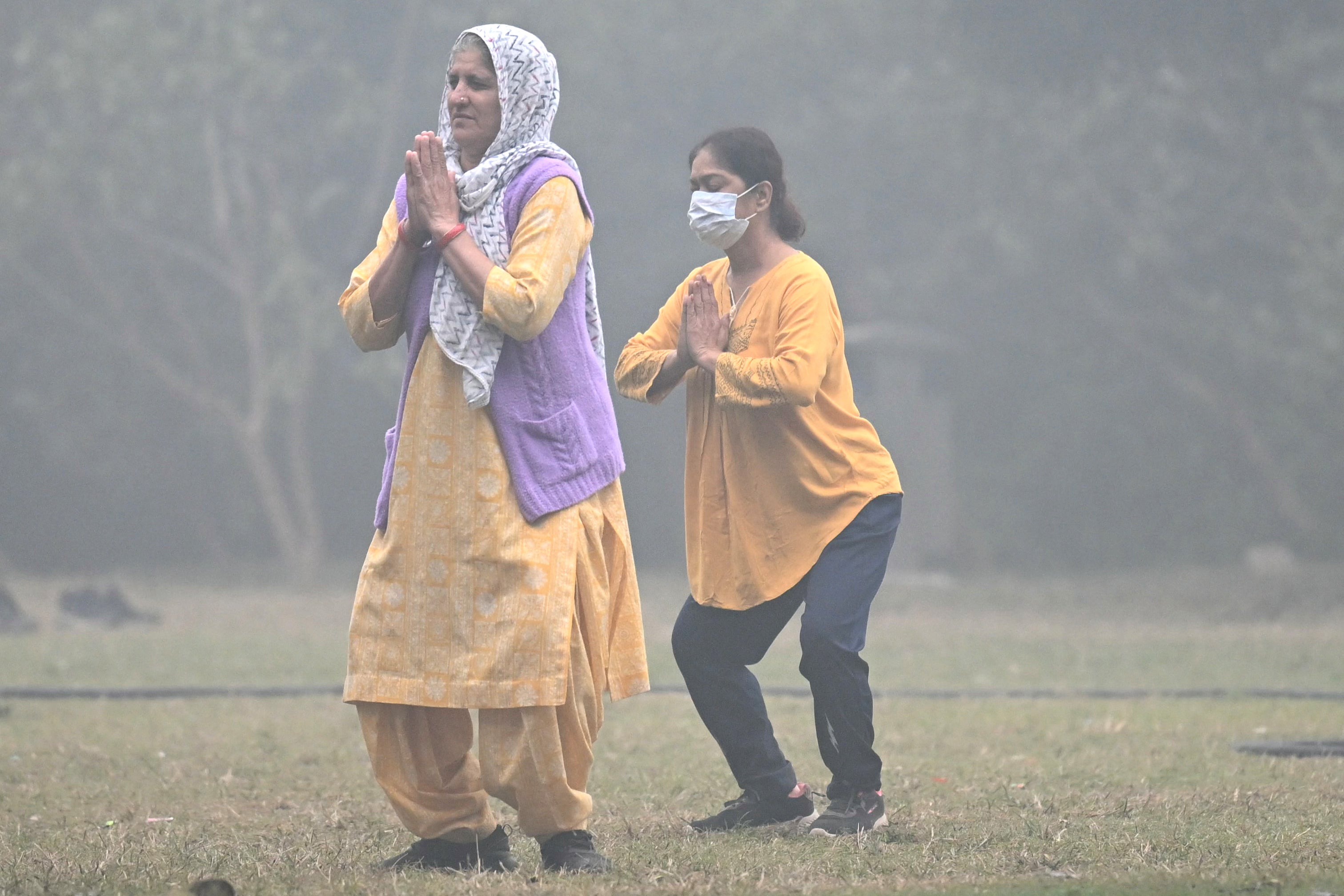As the toxic smog enveloping Delhi worsened this week, authorities in the Indian capital imposed the most stringent set of restrictions on movement of vehicles and people in the Indian capital.
The restrictions included a halt to all construction activity, a ban on diesel trucks, the closure of schools and colleges, and a recommendation for offices to shift to a work from home model.
The average air quality index in Delhi increased to 494 on Tuesday, well beyond the “severe plus” category for air pollution.
According to Swiss Air Quality Index monitoring group IQAir, the concentration of PM2.5 in the air increased to 737 on Monday, about 150 times the WHO limit, making Delhi, home to more than 30 million people, the world’s most polluted city.
PM2.5 refers to tiny particulate matter that can penetrate deep into human lungs and even enter the bloodstream.
Being exposed to such a high level of PM2.5 is equivalent to smoking 50 cigarettes a day, Dr Nikhil Modi, respiratory and critical care consultant at the Indraprastha Apollo Hospitals, told The Indian Express.
What happens to the body when exposed to high levels of air pollution?
A study published in June analysed over 40 years of data to reveal that air pollution caused 135 million premature deaths over the last four decades. Asia had the “highest number of premature deaths attributable to PM 2.5 pollution”, at over 98 million people, in this period, with India and China accounting for the bulk of the fatalities.
The WHO previously said the “combined effects of ambient air pollution and household air pollution” were associated with around 6.7 million premature deaths worldwide every year.
As air quality worsens, pollutants enter the lungs and trigger allergic rhinitis, irritation in the nose, persistent headaches, as well as skin conditions like dermatitis and eczema. Prolonged exposure to AQI this high usually leads to asthma, pulmonary disease and, in extreme cases, lung cancer.

High levels of PM2.5 can also cause chronic kidney and liver diseases, hyper irritability, memory loss, and neuroinflammatory disorders.
“In the heart, it contributes to hypertension, heart attacks, and heart failure. The brain is also affected, with links to cognitive decline, dementia, Alzheimer’s disease, even strokes. On the skin, air pollution can trigger different types of dermatitis,” Arup Halder, pulmonologist at the CMRI Hospital, told Business Standard.
He explained that ultrafine particles less than 0.1 micron in diameter enter the bloodstream from the lungs and harm the heart by causing hypertension, ischemia and heart attacks, especially in winter. The particles can also enter the brain – triggering headaches, dementia, and compromised neurological development in children – kidneys, and even reproductive organs.
Pregnant women are at greater risk since polluted air can damage the placenta and disrupt foetal growth and development, which in turn makes the child vulnerable to several diseases in adulthood.
“The impact is particularly serious among pregnant women and young children because it affects the growing organs of the foetus and young child and is likely to have permanent effects on physical and cognitive development,” Dr Soumya Swaminathan, a former WHO chief scientist, told Health Policy Watch.

A study published in Nature in 2022 found that over 40 per cent of the 2 million stillbirths reported across 137 countries in 2015 were caused by exposure to PM2.5 levels exceeding the WHO limit. That is a total of more than 800,000 stillbirths.
According to another study published in 2021, about 30 per cent children in Delhi suffered from obstruction in air flow or asthma. Compared to children in relatively less polluted states, children in the Indian capital not only suffered from higher rates of asthma, but also allergic rhino-conjunctivitis, eczema, cough, shortness of breath, and chest pain or tightness.

In 2023, according to a report in Down to Earth, the Ram Manohar Lohia Hospital in Delhi reported a 30 per cent rise in patients with respiratory illnesses on days the pollution in the city was recorded as severe.
A hospital in north Delhi, Vallabhbhai Patel Chest Institute, saw 50 new cases of respiratory illnesses daily on average between 2 November and 10 November last year.
“People including children and senior citizens are struggling to breathe and we deeply regret this situation,” Delhi’s environment minister Gopal Rai said on Tuesday.
Authorities have advised the elderly, children and people suffering from respiratory, cardiovascular, cerebrovascular and similar chronic diseases to stay indoors until the air quality improves.
The annual pollution crisis in Delhi worsened over the weekend as air quality deteriorated to the worst level this year and a thick blanket of smog hung over the national capital region.
A survey last week found that nearly half of Delhi’s residents sought medical help for respiratory problems due to the severe air pollution and 81 per cent reported related health issues.
Four in 10 households consulted a doctor, the survey by LocalCircles found, with the more severe patients visiting city hospitals.







